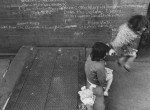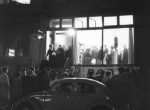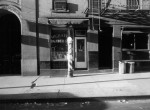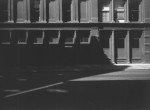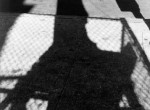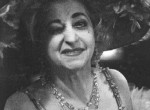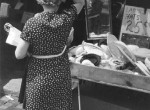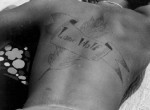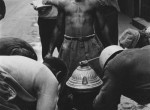 Untitled, 1963Gelatin silver photograph. 1963 print. Artist credit stamp with artist annotations on mount verso.Contact For Pricing & Availability
Untitled, 1963Gelatin silver photograph. 1963 print. Artist credit stamp with artist annotations on mount verso.Contact For Pricing & Availability
9 3/4 x 13 7/8 inches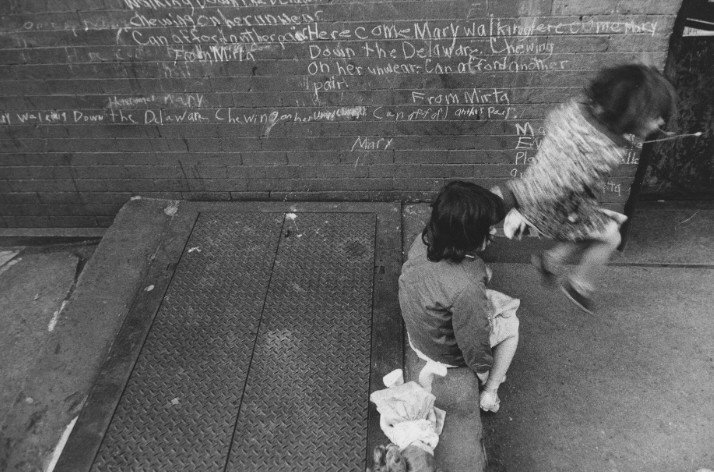 Near 91st and 2nd, c.Early 1960sGelatin silver photograph. Titled and stamped on verso.Contact For Pricing & Availability
Near 91st and 2nd, c.Early 1960sGelatin silver photograph. Titled and stamped on verso.Contact For Pricing & Availability
6 1/4 x 9 1/4 inches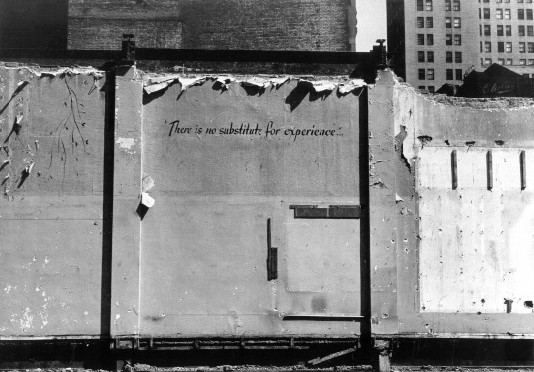 Untitled, c.Early 1960sGelatin silver photograph. Stamped on print verso.Contact For Pricing & Availability
Untitled, c.Early 1960sGelatin silver photograph. Stamped on print verso.Contact For Pricing & Availability
6 1/2 x 9 1/2 inches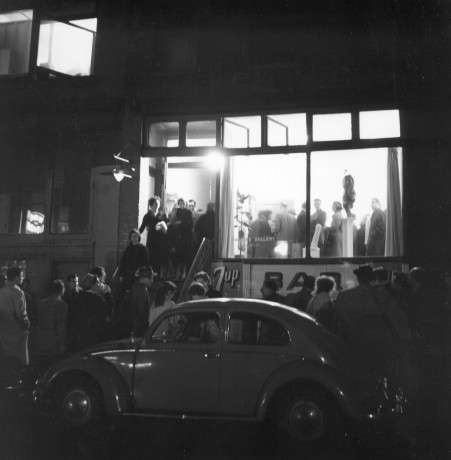 Untitled, c.Early 1960sGelatin silver photograph. Artist stamp on print verso.Contact For Pricing & Availability
Untitled, c.Early 1960sGelatin silver photograph. Artist stamp on print verso.Contact For Pricing & Availability
7 1/2 x 7 1/2 inches Untitled, c.Early 1960sGelatin silver photograph. Artist stamp on rint verso.Contact For Pricing & Availability
Untitled, c.Early 1960sGelatin silver photograph. Artist stamp on rint verso.Contact For Pricing & Availability
6 1/2 x 9 1/2 inches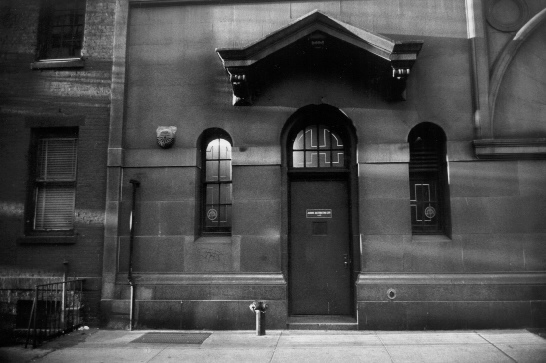 Untitled, c.Early 1960sGelatin silver photograph. Artist stamp on print verso.Contact For Pricing & Availability
Untitled, c.Early 1960sGelatin silver photograph. Artist stamp on print verso.Contact For Pricing & Availability
6 3/8 x 9 1/2 inches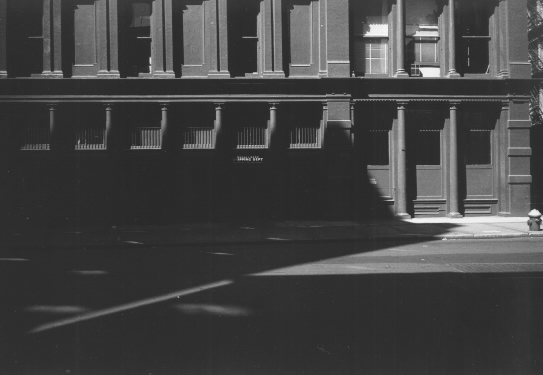 Untitled, c.Early 1960sGelatin silver photograph. Artist stamp on print verso.Contact For Pricing & Availability
Untitled, c.Early 1960sGelatin silver photograph. Artist stamp on print verso.Contact For Pricing & Availability
9 1/2 x 6 1/2 inches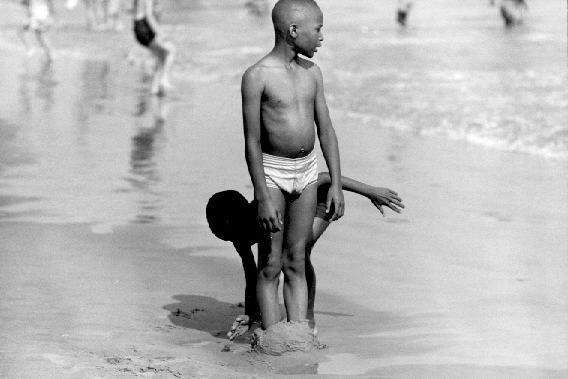 Untitled, c.Early 1960sGelatin silver photograph. Artist stamp on prin verso.Contact For Pricing & Availability
Untitled, c.Early 1960sGelatin silver photograph. Artist stamp on prin verso.Contact For Pricing & Availability
9 x 12 3/4 inches Untitled, c.Early 1960sGelatin silver photograph. Artist stamp on print verso.Contact For Pricing & Availability
Untitled, c.Early 1960sGelatin silver photograph. Artist stamp on print verso.Contact For Pricing & Availability
13 3/8 x 8 7/8 inches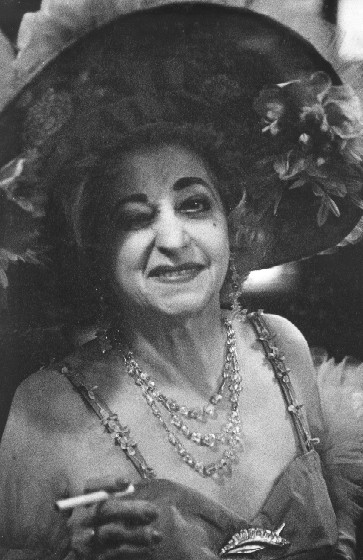 Untitled, c.Early 1960sGelatin silver photograph. Artist stamp on print verso.Contact For Pricing & Availability
Untitled, c.Early 1960sGelatin silver photograph. Artist stamp on print verso.Contact For Pricing & Availability
13 x1/4 x 9 1/4 inches Untitled, c.Early 1960sGelatin viler photograph on mount. Artist stamp on verso.Contact For Pricing & Availability
Untitled, c.Early 1960sGelatin viler photograph on mount. Artist stamp on verso.Contact For Pricing & Availability
13 3/4 x 8 1/4 inches Untitlesd (Lone Wolf), c.Early 1960sSilver gelatin photograph. Signed by artist with artist stamp on mount verso.Contact For Pricing & Availability
Untitlesd (Lone Wolf), c.Early 1960sSilver gelatin photograph. Signed by artist with artist stamp on mount verso.Contact For Pricing & Availability
13 1/4 x 8 7/8 March on Washington, August 28, 1963Gelatin silver photograph. Artist stamps on print verso.Contact For Pricing & Availability
March on Washington, August 28, 1963Gelatin silver photograph. Artist stamps on print verso.Contact For Pricing & Availability
9 1/2 x 13 1/2 inches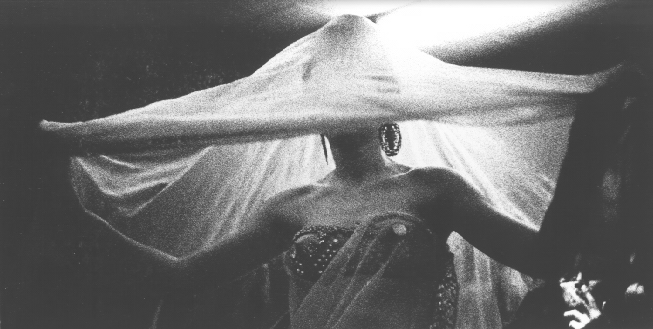 Untitled, c.Early 1960sGelatin silver photograph. Artist stamp on print verso.Contact For Pricing & Availability
Untitled, c.Early 1960sGelatin silver photograph. Artist stamp on print verso.Contact For Pricing & Availability
6 3/4 x 13 inches Untitled, c.Early 1960sGelatin silver photograph. Artist stamp on print verso.Contact For Pricing & Availability
Untitled, c.Early 1960sGelatin silver photograph. Artist stamp on print verso.Contact For Pricing & Availability
13 1/2 x 9 1/2 inches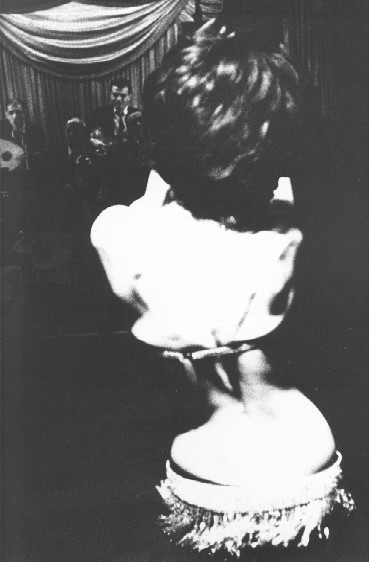 The Hourglass, 1962Gelatin silver photograph. 1962 print. Artist stamps on mount margin recto and verso, titled and dated by Barbara Singer on mount margin recto.Contact For Pricing & Availability
The Hourglass, 1962Gelatin silver photograph. 1962 print. Artist stamps on mount margin recto and verso, titled and dated by Barbara Singer on mount margin recto.Contact For Pricing & Availability
13 1/4 10 1/2 inches
Nat Herz
Nat Herz was a poet, writer, photographer and teacher by profession, and a dedicated civil rights activist. He was one of the first persons in history to see the value of Aesthetic Realism, founded in 1941 by the great American poet, critic and philosopher, Eli Siegel, and taught now by Ellen Reiss, whom Siegel chose to be Class Chairman, and by a faculty of consultants at the Aesthetic Realism Foundation in New York City with outreach in the nation and abroad. Nat Herz cared for this philosophy deeply and used it in his life and work.
Born in Manhattan, New York, on August 6, 1920, to German parents in a troubled family, Herz experienced a childhood marked both by pain and violence and a great, transcending desire to know the world and love it. Insecurities in his relationships with his parents contributed to the onset at age three of asthma, which continued throughout his life and contributed to his unexpected death from a heart attack in 1964 at age 44.
Early in his life Herz read Walt Whitman, whose work inspired and influenced him greatly. Herz wrote his first lines of verse at age 11 and he began taking photographs during several visits with his mother to Germany during the years of Hitler’s ascendancy. Following his mother’s commitment to a mental hospital, Herz went to live with an aunt in Brooklyn, where he developed what would become a lifelong interest in politics.
Herz completed his undergraduate work at Brooklyn College. In 1940 what he has described as the most important event in his life occurred when he began to study poetry with Eli Siegel, author of the prize winning poem, “Hot Afternoons Have Been in Montana” and founder of Aesthetic Realism. In 1941 Herz left New York to study at the University of Iowa because it was thought to have the best writer’s workshop in the United States, but he returned to New York in 1942 and told his friend, the artist Chaim Koppelman, “I have learned more about poetry from Eli Siegel here in New York than I ever learned in Iowa from anyone, including Austin Warren.” Herz began then to study in earnest with Mr. Siegel, and this study continued throughout his life.
In 1956 Herz married Barbara Singer, a fellow student of Aesthetic Realism.
A man of enormous energy, Herz wrote voluminously throughout his short life: poems, articles, letters, and a one-act play. From 1942 to 1958 Herz’s poems were published in many poetry journals. In 1944 he asked the noted Surrealist, Kurt Seligmann, to illustrate a selection of his poems, and they authored Impossible Landscapes, which was published years later by Barbara Singer in The Impossible Landscapes of Nat Herz and Kurt Seligmann. In the 1950’s he was a writer for the American Jewish committee and wrote The Middle East Pocket Handbook. In 1959 he co-authored Personal & Impersonal 6 Aesthetic Realists, a book of poems. In 1960 he wrote and illustrated the Konica Pocket Handbook. He was working on a three-act play when he died.
Around 1954, while supporting himself as a licensed practical nurse (like his hero, Walt Whitman), Herz made his life-long interest in photography an additional career. He began to study with photographer Morris Jaffe. He joined The Aesthetic Realism Photographers and The American Society of Magazine Photographers (ASMP). His positions included writer, picture researcher and editor for LIFE Magazine; picture editor for The Blue Network; and chairman of the Infinity editorial board. Friends and colleagues of Herz included legendary photographers Andre Kertesz, Dorothea Lange, Wynn Bullock, Ralph Hattersley, Lou Bernstein and Norman Rothschild; noted artists printmaker Chaim Koppelman and Surrealists Leonora Carrington and Kurt Seligmann; art directors Joe Sapinsky of the New York Herald Tribune Sunday Magazine and John Szarkowsky, who later headed the Photography Department of the Museum of Modern Art. Herz became the first teacher of photography with the Aesthetic Realism point of view.
Herz’s photographs and articles were published in many periodicals including Camera 35, Debonair, East, Infinity, Living Stereo, Modern Photography, New York Mirror Magazine, The Sunday Herald Tribune, Pageant, Popular Photography, TV Guide, and Women’s Wear Daily. In 1960 and again in 1961 he was awarded the Art Directors Club Award. In 1964 Herz wrote the introduction to What’s There, Lou Bernstein’s Photographs, An Aesthetic Realism Art Inquiry Conducted by Eli Siegel, (Terrain Gallery, New York).
In 1960, Herz’s photographs were presented in a solo exhibition, Color Statement, at the Terrain Gallery, New York. By 1964 Herz was exhibiting at the Art Directors Club, New York, where he won various awards; the American Society of Magazine Photographers, New York; the Jacksonville Art Museum, Florida; and the Terrain Gallery, New York.
Group exhibitions include Photographs of the Civil Rights Movement from the collection of The Chrysler Museum of Art, Norfolk, Virginia, 1997; and Appeal to This Age: Photography of the Civil Rights Movement, 1954-1968, originating in the Howard Greenberg Gallery, New York, in 1994 and traveling to museums and galleries in the U.S. and abroad through 1999. Herz’s images of the March were included in Building America, published by the National Building Museum, Washington, D.C., and elsewhere.
In the fall of 1999 The Hirschl & Adler Gallery presented Impossible Landscapes of the Mind, featuring drawings by the Surrealist Kurt Seligmann inspired by Nat Herz’s poetry written in the 1940s, and Herz’s Surrealist photographs taken in the 1950s and 60s. A livre d’artiste called The Impossible Landscapes of Nat Herz and Kurt Seligmann by Barbara Singer made its debut at the exhibition.
Since 1999 Herz’s photography has been widely published in magazines, books, videos and on the web. He is represented by the Stephen Daiter Gallery in Chicago, by Bridgeman Images, and Getty Images.
In 2015, Herz’s poems in Impossible Landscapes were read in The Summoning, A Surrealist Poetry Reading in Homage to Kurt Seligmann by Garrett Caples, Weinstein Gallery, San Francisco.
A statement written by Nat Herz accompanying a portfolio of his photographs in Infinity, April 1964, perhaps best articulates his purpose as a person and an artist:
“For me, photography is the art of reality-as-it happens. I have wanted to be closer to this. I have wanted to be true to my deepest self as I used the camera to find form in the external world with its seeming muddle of beauty and ugliness, humor and despair, majesty and triviality. I have come closer to these ends, in fact recognized them as goals through studying the philosophy of Aesthetic Realism with its founder Eli Siegel. I have lingered on the meaning of the Siegel Theory of Opposites as it is embodied in his fifteen questions: “Is Beauty the Making One of Opposites?” and it has paid off. I have learned something of what it means to try to love reality—no easy thing. I have wanted to get at the beauty of the world through a finely-tooled machine. And I have been mightily encouraged in this difficult art—no small thing.
For me, there is nothing more thrilling in photography than when in the viewfinder, reality-as-it-happens takes on a permanent, perhaps infinite, form. Every good photograph is a celebration, a praise of the external world through a proud photographer’s eyes. I have wanted to see into the heart of reality-as-it happens. I have waited patiently within the changing light of the everyday world. I have wanted to approach that place with love within the second’s fraction where the opposites of beauty and ugliness meet and are one.”
On the day following Herz’s death in 1964, Barbara Singer wrote a series of messages that she knew her husband would like to give to people to consider. Among those published in Herz’s obituary in the February Infinity magazine of the ASMP were several that speak to the heart of the man and the heart of his work:
1. Nat Herz would like people to use him and what has happened to him to be kinder to people and the world.
2. Nat Herz would like people to use him to be more honest.
3. Nat Herz would like us to be increasingly keen and strongly against our
unjust anger and contempt for people and the world.
4. Nat Herz would like us to care for, look for beauty in the world wherever it is, and not be insulted by the job.
5. Nat Herz wants people to be just to Aesthetic Realism.
Exhibitions
ArrayNo Upcoming Exhibitions
Publications
No Artist Publications

